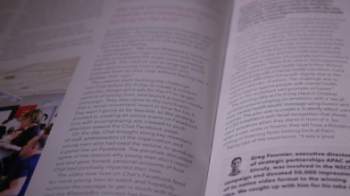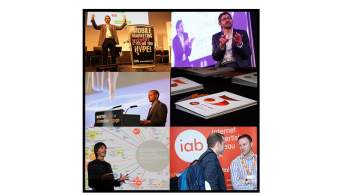Attention isn’t something marketers can buy, but something they earn
John Douglas
John Douglas, Product Strategy Director at Sizmek, writes about attention and how it's increasingly difficult to gain in digital
It’s a given that in order to be effective, advertising must capture an audiences’ attention. Yet as digitalisation fuels a proliferation of online choice, doing so is increasingly difficult.
Where once advertisers knew their billboard, newspaper or TV ads would make an impact on their target audience — mostly due to a monopoly on media and market verticals — the rise of digital has created a flood of competition for audience interest and spend.
Of course, this shift has driven positive change. For example, the ‘one-to-many’ model that traditional ads operated on guaranteed audience attention, yet it lacked audience identification; an area in which today’s digital models excel. But it does present a key issue: although ads can be precisely targeted, there is no assurance they will inspire audiences.
So, where does the industry go from here?
To find out, we must start with an exploration of the path digital has taken so far and whether it may be time to take a new direction.
The quest for audience attention
While it has been said many times before, it’s still important to acknowledge that the banner ad
is largely responsible for losing customer engagement. As a format that quickly became easy to ignore, it failed to captivate consumers and fed the perception that bigger and bolder ads were needed to achieve cut through. Thus, when the rich media revolution began, the industry was already fixated on competing for audience attention using the flashiest (pun intended) ad experience and engagement was soon established as the new measure of success. But for all the fractional click-through rates (CTRs), brands still weren’t delivering true value.
So, in a bid to restore advertising power, digital introduced new premium formats. And even today, advertisers and publishers are deploying techniques such as autoplay and out-stream video or native to grab consumer attention. Yet despite this, audience impact remains elusive.
What can digital learn from analogue?
We might have left the days of traditional media behind, but that doesn’t mean the successes and drawbacks of the past can’t be leveraged to further the development of future advertising.
Here are the two key lessons modern marketers can take from advertising’s past:
Move with the times
It seems that the current marketing landscape is filled with unanswered questions: how and why do impressions fail to elicit a response – was it because the ad was served to a bot or out of view? And what is the advertiser’s share of voice? Reach and response were simple to measure when advertisers had a finite store of insight to work with, such as TV tune-in numbers, but today a new kind of measurement is needed. The industry must follow the pattern set by other media evolutions and adapt its methods; harnessing data from across the media plan to create a clear view of individual identity that can be used to understand consumers and how they interact with ads.
Deliver real ad value
At present, advertisers are focusing all of their spending on long-tail content in an attempt to ensure they are reaching consumers on the go — rather than allocating dollars to high quality, top-tier content. Content business models have been interrupted, and publishers are on high alert as they look for the latest ways to boost revenue. It’s apparent that the original goal of advertising must be reinstated: offering a true value exchange for audiences. Advertisers need to recall the importance of context and use sophisticated new tools to ensure messages align with their environment, as well as individual tastes and habits. In this way they can provide relevant and inspiring experiences that consumers want to engage with, rather than moving to seize attention with interruptive ads. Though this does come with a caveat; the data used to inform these messages must be used carefully. Privacy has become a top priority for consumers and with new regulations soon coming into force it will only become more so. As a result, advertisers should deploy data sensitively; making sure individuals are not personally identifiable and keeping brand associations positive by avoiding overly tailored messaging.
Attention comes at a premium today, but marketers need to be responsible stewards of data and allow consumers control. If the industry focuses too much on the attention economy and chasing quick-hits, advertising will fail to provide messages worthy of audience interest. It is crucial to recognise attention is something that must be earned; by taking lessons from traditional ads and putting consumer needs — and context — back at the heart of their campaigns. If they achieve this, then advertisers can generate valuable experiences that will set their brand apart and keep audiences hooked.
Related content
Debate & diversity are both essential to make the ad industry better
Learn moreQuick Q&A - Brand Safety
Learn moreIAB UK bids farewell to flagship Mobile Engage event
Learn moreDigital Adspend
Learn more
Rediscover the joy of digital advertising
Champion connections instead of clicks. Capture audiences' imaginations, not just their attention. Boldly find your own beat instead of letting tech set the pace. It’s time to rediscover the joy of digital.



